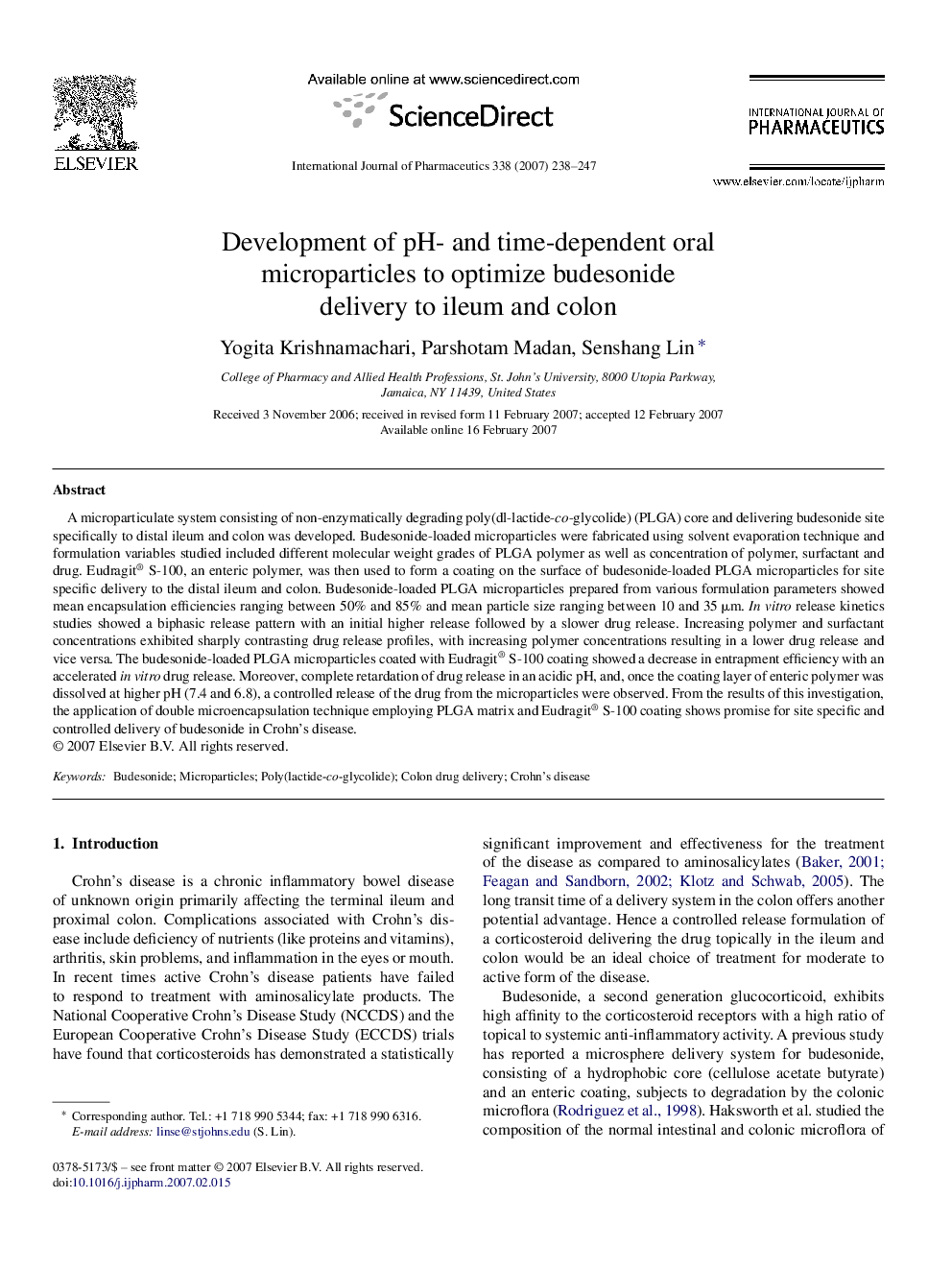| Article ID | Journal | Published Year | Pages | File Type |
|---|---|---|---|---|
| 2506201 | International Journal of Pharmaceutics | 2007 | 10 Pages |
A microparticulate system consisting of non-enzymatically degrading poly(dl-lactide-co-glycolide) (PLGA) core and delivering budesonide site specifically to distal ileum and colon was developed. Budesonide-loaded microparticles were fabricated using solvent evaporation technique and formulation variables studied included different molecular weight grades of PLGA polymer as well as concentration of polymer, surfactant and drug. Eudragit® S-100, an enteric polymer, was then used to form a coating on the surface of budesonide-loaded PLGA microparticles for site specific delivery to the distal ileum and colon. Budesonide-loaded PLGA microparticles prepared from various formulation parameters showed mean encapsulation efficiencies ranging between 50% and 85% and mean particle size ranging between 10 and 35 μm. In vitro release kinetics studies showed a biphasic release pattern with an initial higher release followed by a slower drug release. Increasing polymer and surfactant concentrations exhibited sharply contrasting drug release profiles, with increasing polymer concentrations resulting in a lower drug release and vice versa. The budesonide-loaded PLGA microparticles coated with Eudragit® S-100 coating showed a decrease in entrapment efficiency with an accelerated in vitro drug release. Moreover, complete retardation of drug release in an acidic pH, and, once the coating layer of enteric polymer was dissolved at higher pH (7.4 and 6.8), a controlled release of the drug from the microparticles were observed. From the results of this investigation, the application of double microencapsulation technique employing PLGA matrix and Eudragit® S-100 coating shows promise for site specific and controlled delivery of budesonide in Crohn's disease.
